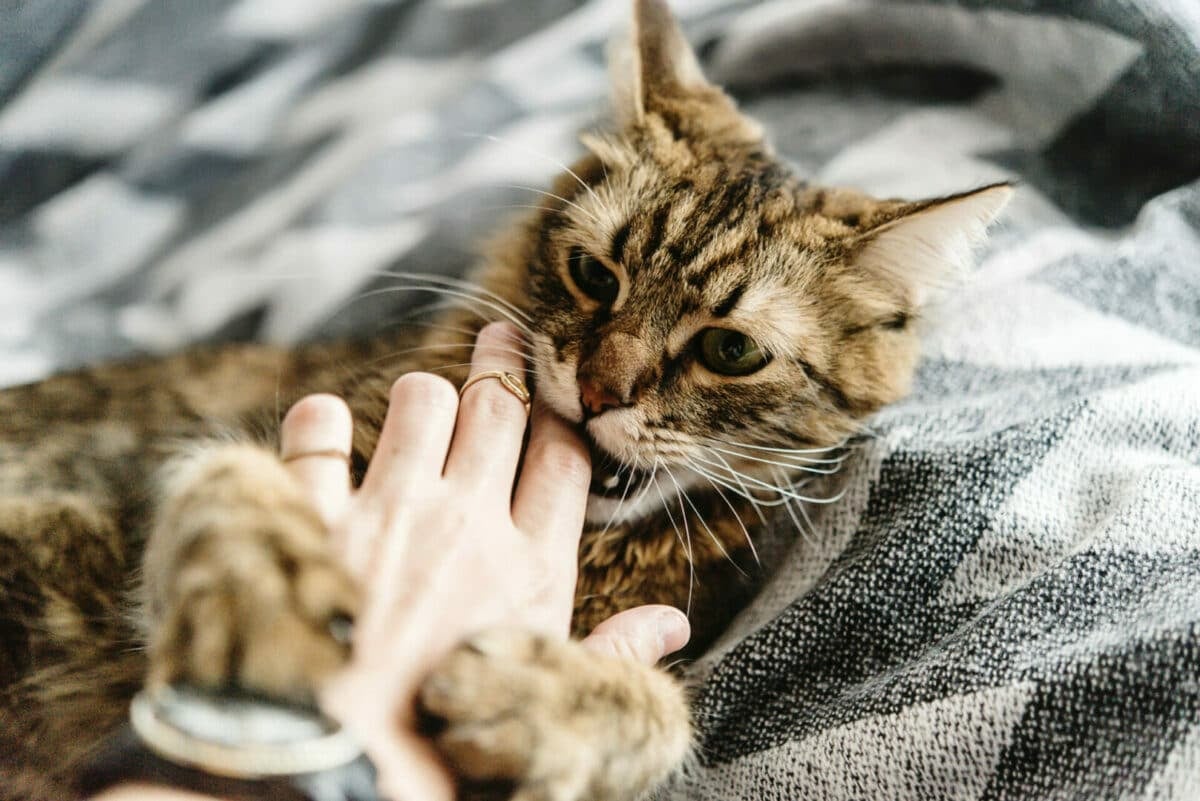With their independent attitudes, ability to sleep all day, and an admirable habit of always getting what they want, we see cats as these perfect little beings. They might suffer from the occasional hairball, but for the most part, felines seem to live an enviable lifestyle. Your cat probably doesn’t realize how good they have it compared to the humans of the family, but what if that’s because they assume you’re exactly the same as them? Sure, you’re bigger and a lot clumsier, but cat behaviorists have a theory that cats don’t see humans as a separate species.
Evidence in Interactions
John Bradshaw, a cat behaviorist and author, told National Geographic it’s likely that cats see humans as (weird-looking) fellow cats. He said,
“We’ve yet to discover anything about cat behavior that suggest they have a separate box they put us in when they’re socializing with us.”

If you think about how you and your cat interact, it’s easy to see what he means.
Cats like to rub against our legs, bump our heads, and lick us with their prickly tongues. They also put their butts in our faces, even though we don’t like it, and they knead their paws when they’re cuddling in our laps. All of these behaviors are things your cat would also do with another cat.
Cats VS Dogs
If you’re still not convinced, look at the differences between how cats and dogs treat humans. Dogs are typically eager to please and tend to look toward humans for guidance and direction. While some cats can be trained to do certain behaviors, they’re not known to follow a human’s lead. Your cat is more likely to stoically stare at you than they are to eagerly await your next direction. They don’t see you as being in charge, and they definitely don’t think you have a right to tell them what to do.

A dog might sniff your butt as if you’re another canine, but dogs don’t usually treat humans like they would other dogs. This suggests dogs have at least a basic understanding that humans are innately different than themselves. Cats, however, don’t defer to humans the way dogs do, and they show few signs of treating us any differently.
A Mother-Kitten Relationship
The only behavioral evidence to suggest cats see humans differently is the fact that adult cats meow at humans, but they don’t usually meow at other cats. Kittens mew at their mothers, and rival cats hiss and yowl at each other, but that’s different than the plaintive sounds cats direct toward humans. This could suggest cats do indeed realize humans are a different species, or it could be evidence that cats don’t only think of us as fellow cats, but that they think of us as their actual cat moms and dads.
Kittens meow to get their mothers’ attention. They typically outgrow this behavior, but what if they’re not so much outgrowing it as they are transferring the interaction to a new mother figure, AKA, you?

Bradshaw suggests the interactions between cats and humans is most closely related to the interactions between kittens and their mothers. Meowing for attention is one example, and so is kneading. The act of kneading comes from kittens moving their paws while they nurse to stimulate a flow of milk. Your adult cat knows kneading your sweater won’t lead to milk, but they do it anyway. This could be because it feels like a natural thing to do when getting cuddly with their mom.
Of course, there’s no way to prove the theory that cats see humans as other cats. They’re obviously intelligent enough to realize that we look a lot different, but that doesn’t seem to affect their behavior. Our cats treat us with the same respect, tolerance, affection, and occasional indifference as they would a fellow feline. And, honestly, what’s wrong with that?



